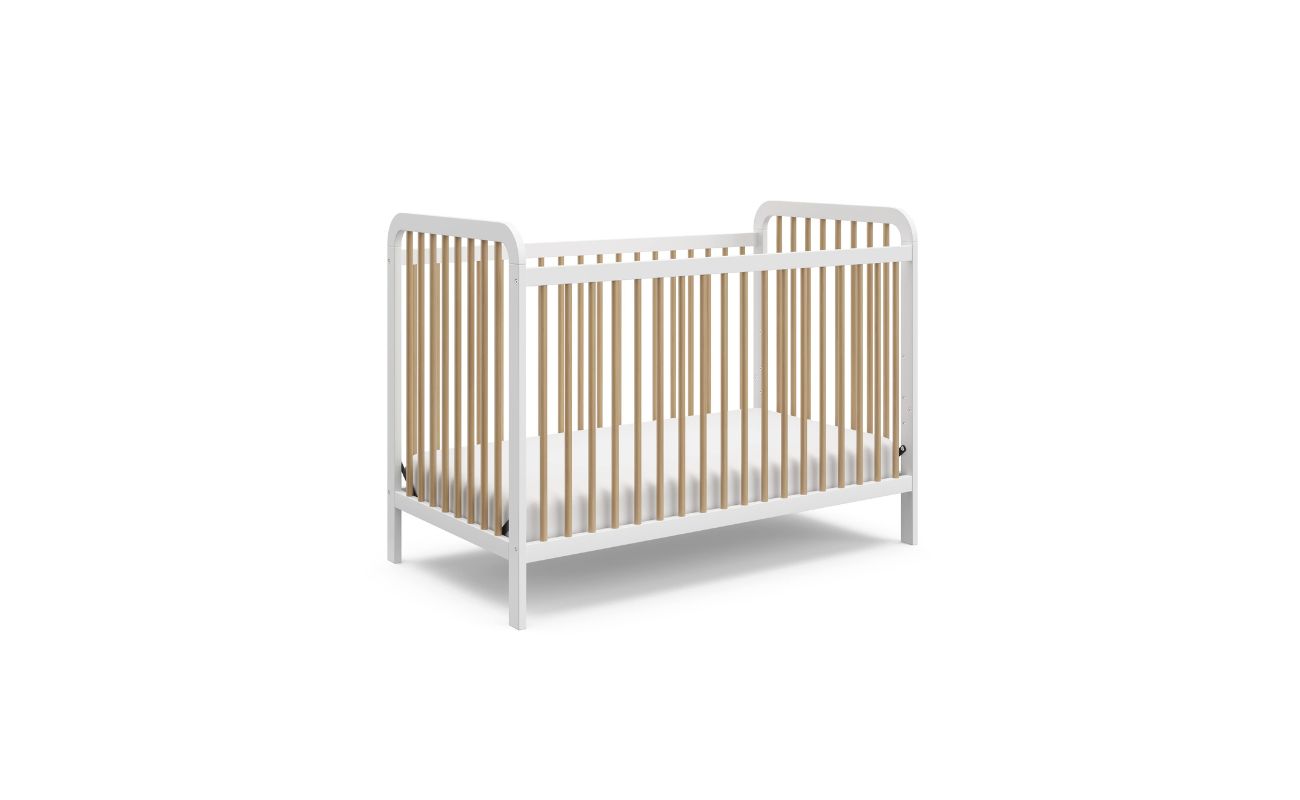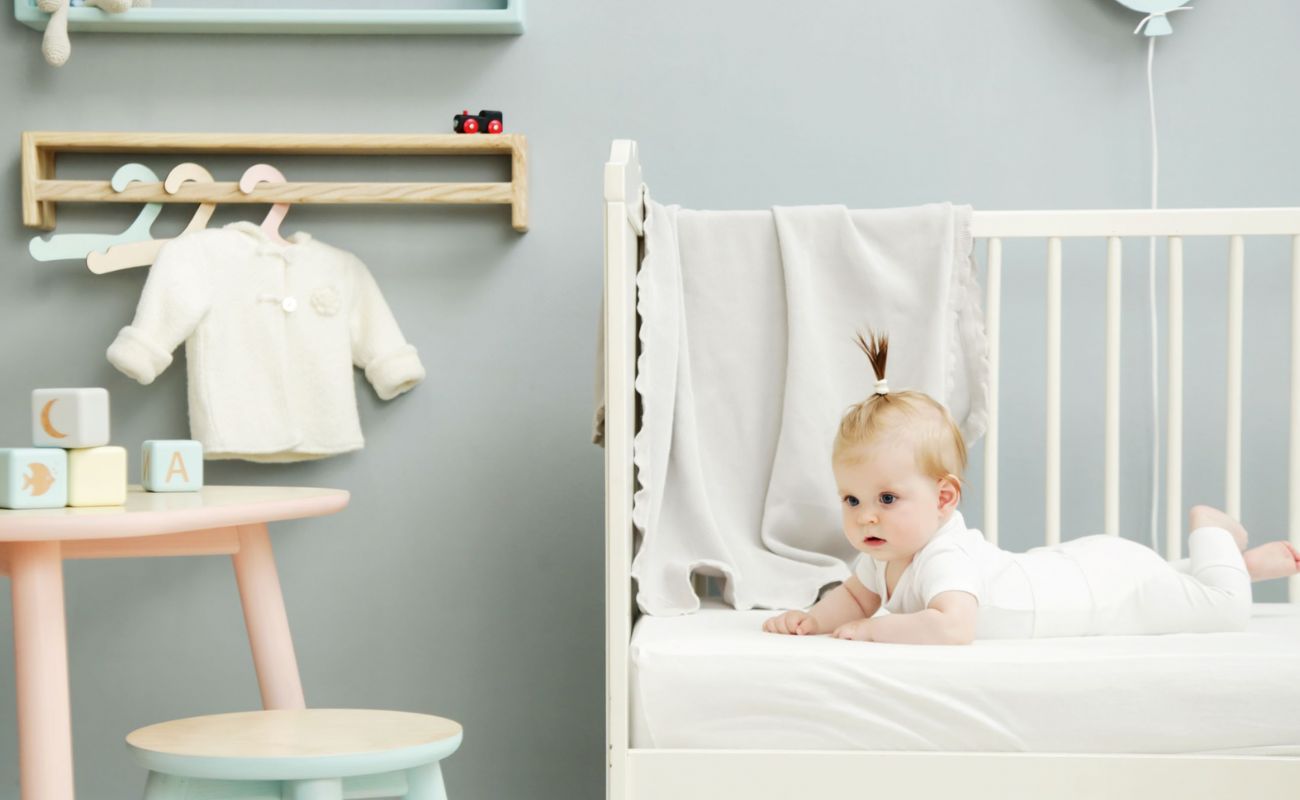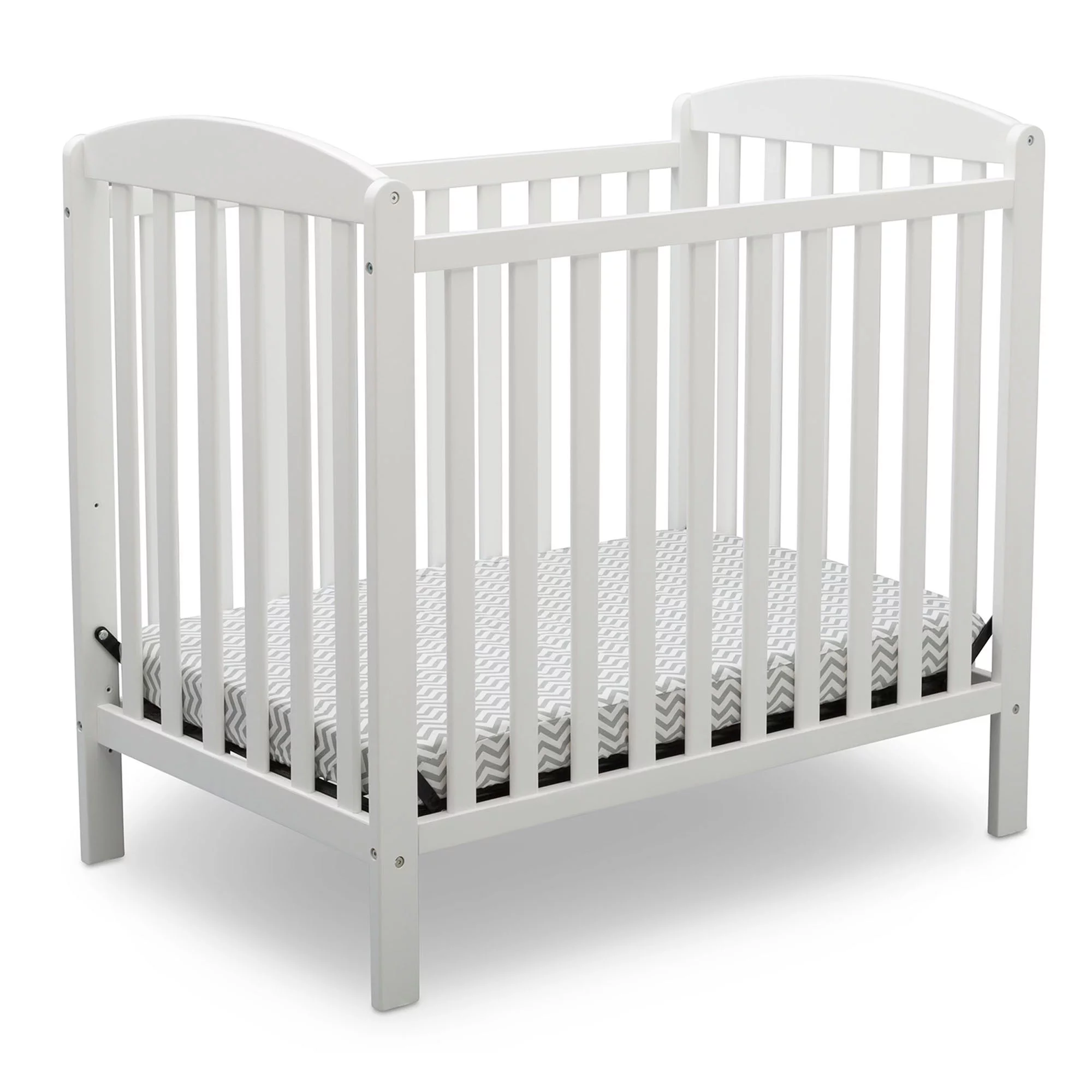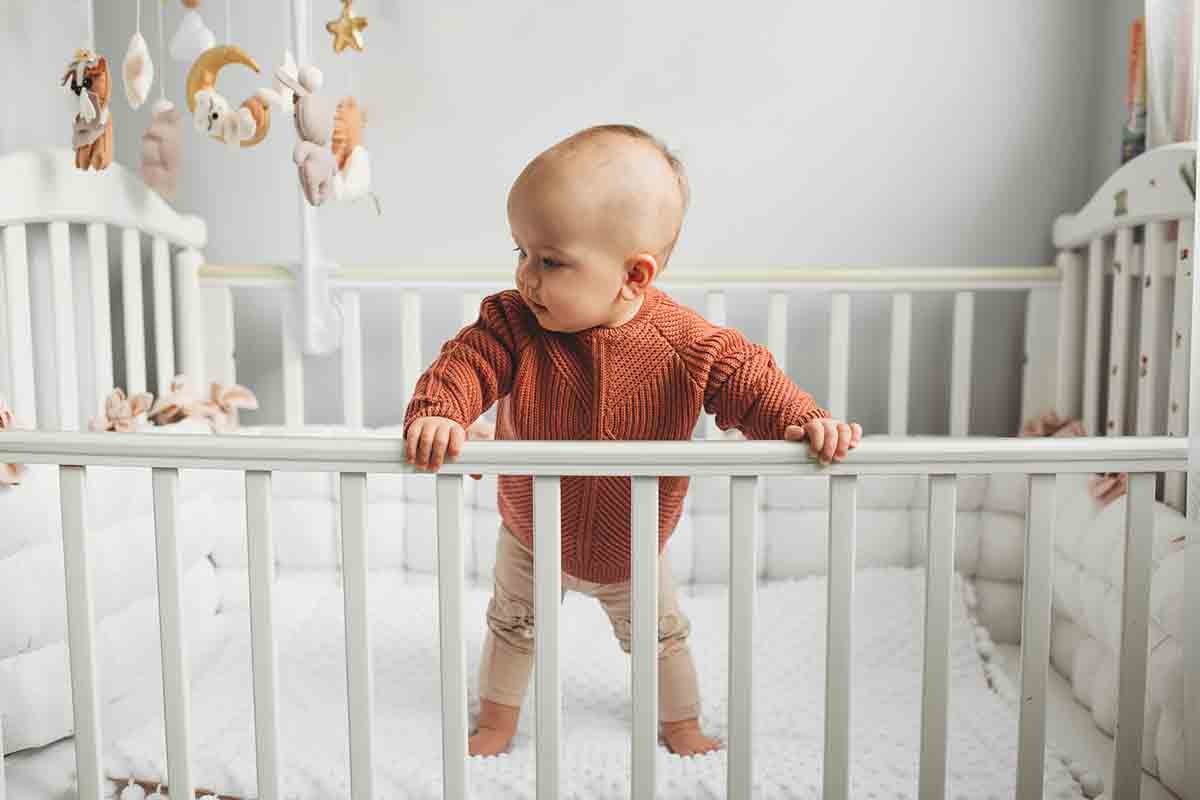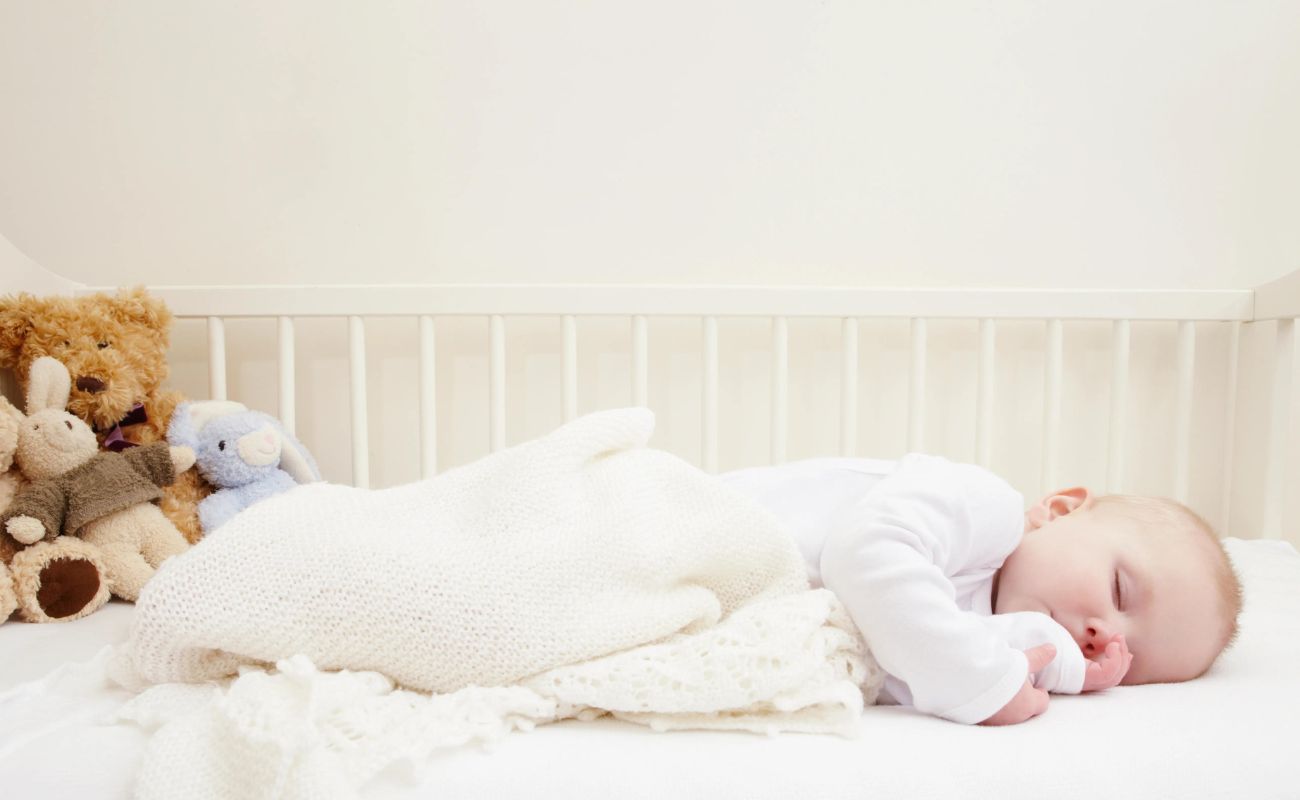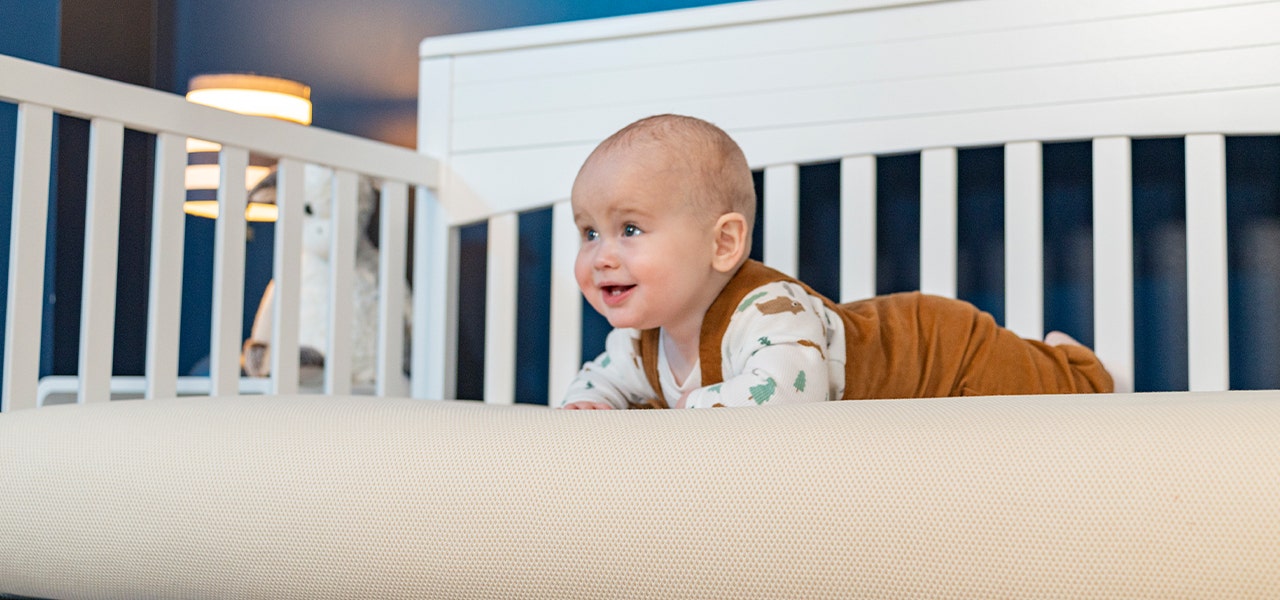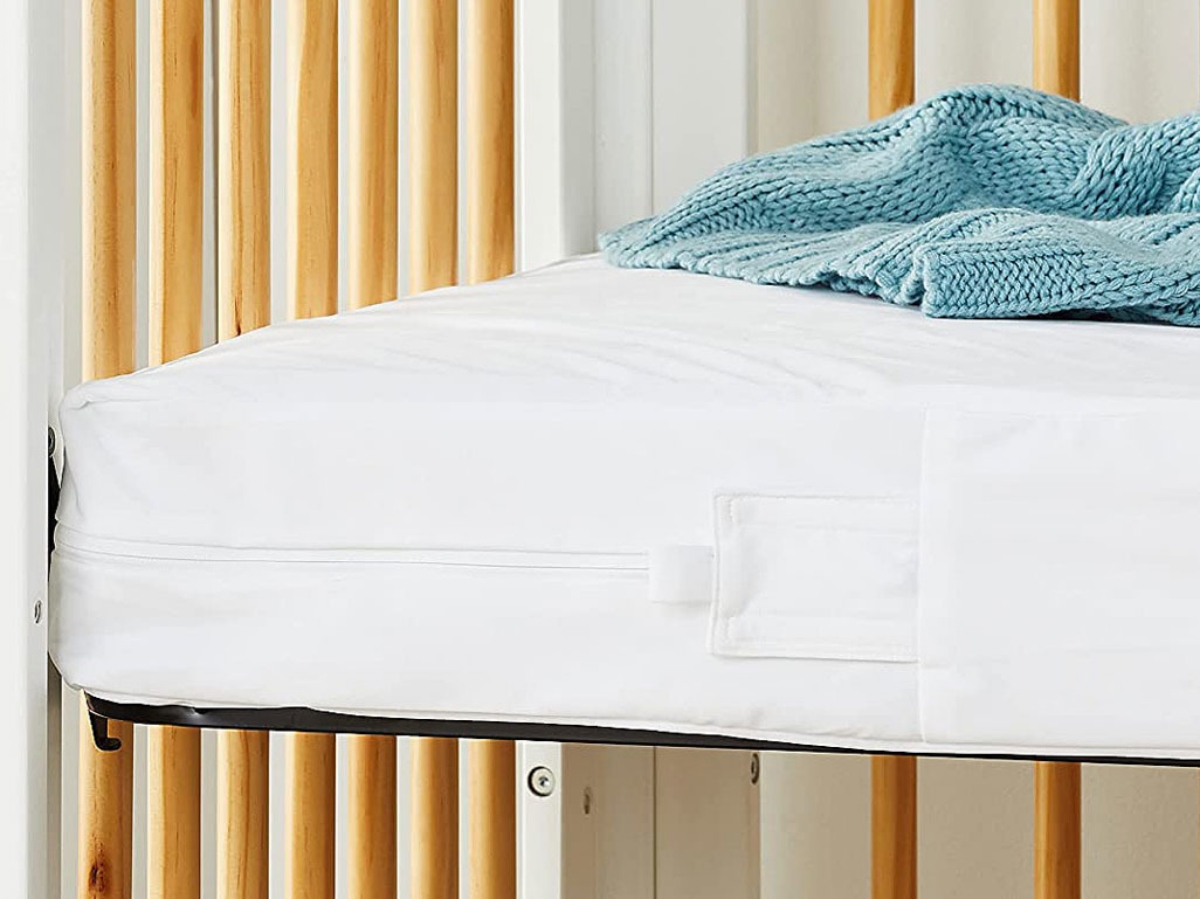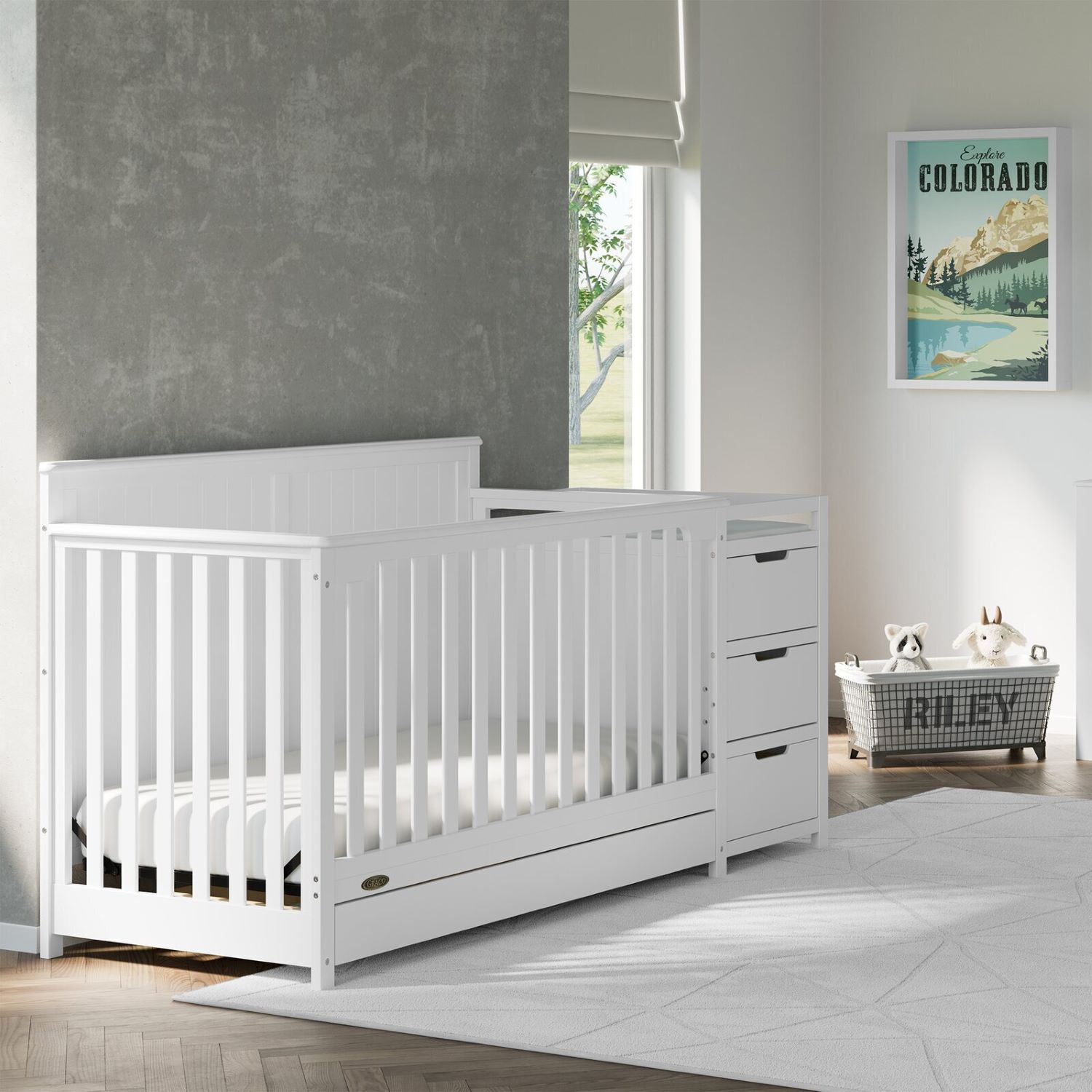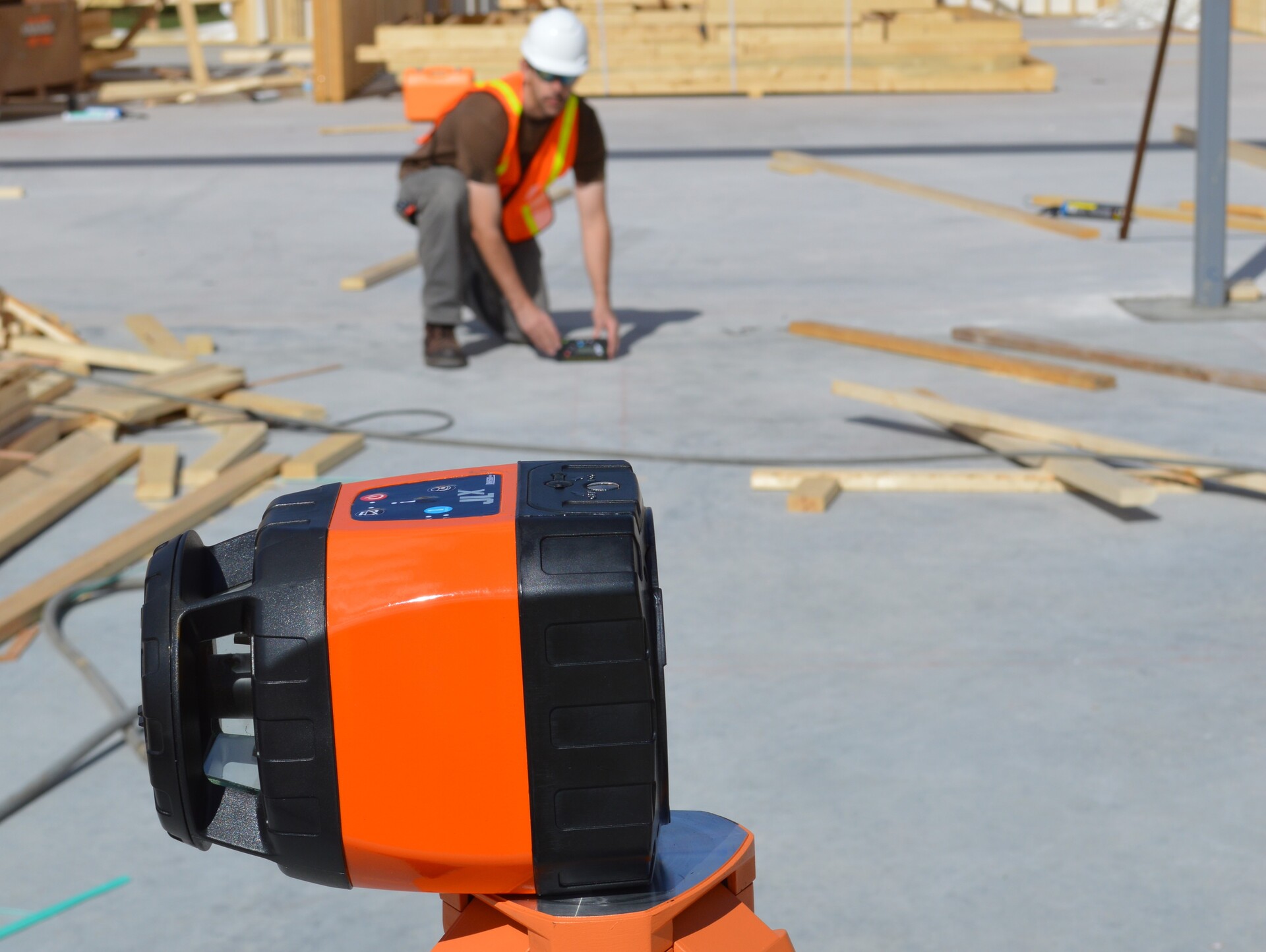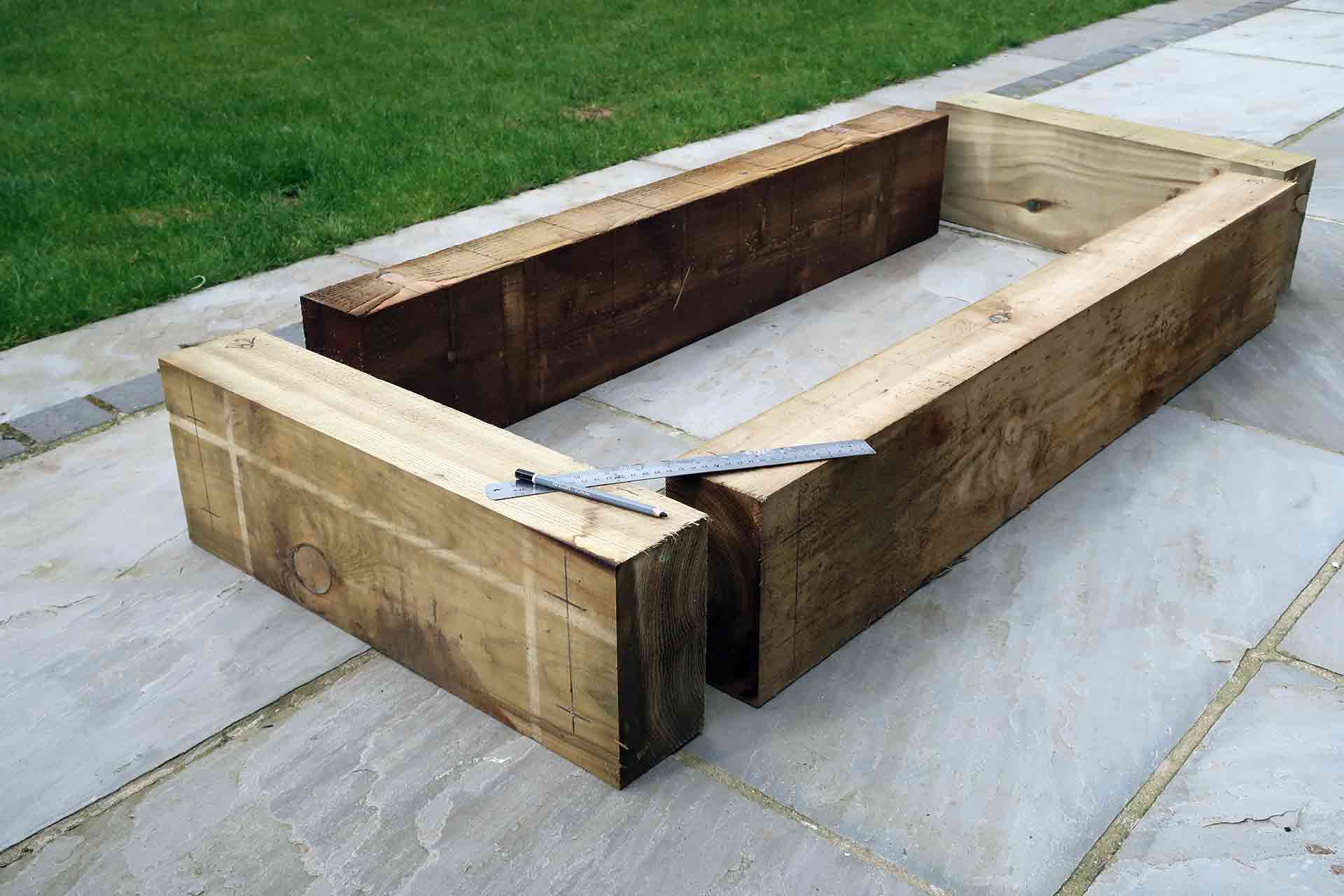Home>Furniture>Bedroom Furniture>How To Elevate A Crib Mattress For Congestion
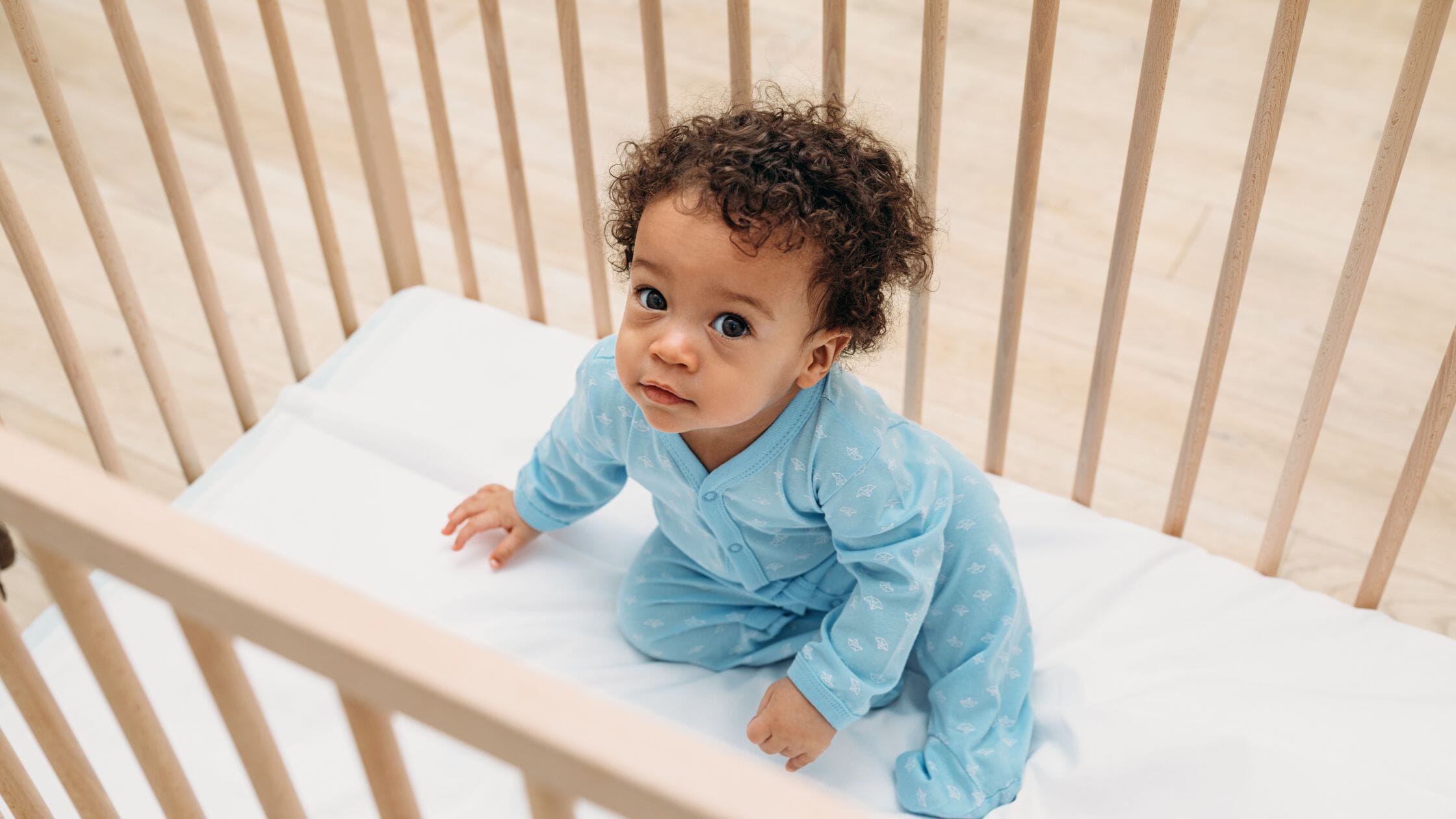

Bedroom Furniture
How To Elevate A Crib Mattress For Congestion
Modified: October 18, 2024
Discover how to elevate your crib mattress for congestion and create a soothing environment for your little one. Enhance your bedroom furniture with this helpful solution today!
(Many of the links in this article redirect to a specific reviewed product. Your purchase of these products through affiliate links helps to generate commission for Storables.com, at no extra cost. Learn more)
Introduction
Welcome to our comprehensive guide on how to elevate a crib mattress for congestion. As a parent, you want to provide the best possible sleeping environment for your baby, especially when they are experiencing congestion. Congestion can make it difficult for infants to breathe comfortably, leading to disturbed sleep and discomfort. Elevating the crib mattress can be an effective solution to alleviate these symptoms and ensure your baby gets a restful night’s sleep.
In this article, we will explore the causes of congestion in babies and why elevating the crib mattress can help. We will also discuss various methods you can use to elevate the mattress safely and comfortably for your little one. Additionally, we will provide important safety measures and precautions to consider when implementing these methods.
By the end of this guide, you will be equipped with the knowledge and techniques to elevate the crib mattress effectively, offering your baby relief from congestion and promoting better sleep for both baby and parent.
Key Takeaways:
- Elevating a crib mattress can help alleviate congestion in babies by improving airflow, reducing swelling, and promoting better sleep. Consult a pediatrician and follow safety measures for effective relief.
- Methods such as using rolled-up towels, crib wedges, or adjustable mattress bases can safely elevate a crib mattress to provide relief for your baby’s congestion. Prioritize safety and consult a pediatrician for personalized guidance.
Read more: How To Elevate A Mattress
Understanding Congestion in Babies
Congestion in babies is a common occurrence and can be caused by several factors. It refers to the blockage or narrowing of the air passages in the nose and throat, often resulting in difficulty breathing, sneezing, sniffing, and snoring. Common causes of congestion in infants include:
- Common cold: Babies are susceptible to the common cold, just like adults. Viral infections can cause nasal congestion, mucus buildup, and a runny nose.
- Allergies: Some babies may experience congestion due to allergies, such as dust mites, pet dander, or certain foods. These allergens can trigger an allergic reaction, leading to nasal congestion and discomfort.
- Respiratory infections: Infants are more prone to respiratory infections, such as bronchitis or pneumonia. These infections can cause congestion, coughing, and chest congestion.
- Teething: When babies are teething, the increased drooling can lead to nasal congestion. The excess saliva can irritate the nasal passages, resulting in a stuffy nose.
Congestion in babies can affect their sleep patterns and overall well-being. It is important to address congestion promptly to ensure a comfortable and peaceful sleep environment for your little one.
Before proceeding with any methods to elevate the crib mattress, it is advisable to consult your pediatrician to rule out any underlying medical conditions and ensure that congestion is the sole cause of your baby’s discomfort.
Why Elevating the Crib Mattress Helps
Elevating the crib mattress has proven to be an effective method in providing relief for babies with congestion. By raising the head of the mattress slightly, you can help reduce nasal congestion, improve breathing, and promote better sleep for your little one. Here are a few reasons why elevating the crib mattress helps:
- Improved airflow: Elevating the head of the mattress helps to tilt the baby’s head slightly upward. This position helps to clear the nasal passages, allowing for improved airflow and easier breathing. It can also help to prevent mucus from pooling in the back of the throat.
- Reduced swelling: When a baby is congested, the nasal passages may become swollen, further impeding airflow. By elevating the crib mattress, you can help alleviate this swelling, offering relief to your baby and promoting better breathing.
- Drainage of mucus: Elevating the head of the mattress can encourage mucus to drain more effectively, preventing it from accumulating and causing further congestion. This can help reduce coughing and the need for constant nose wiping.
- Increased comfort: When babies are congested, lying flat on their backs can be uncomfortable and worsen their symptoms. Elevating the mattress provides a more comfortable sleeping position, allowing your little one to rest more peacefully.
- Promotion of better sleep: Congestion can disrupt your baby’s sleep, leading to frequent waking and restlessness. Elevating the crib mattress can help alleviate congestion, leading to improved sleep quality for your little one and ultimately for you as well.
It is important to note that while elevating the crib mattress can be beneficial, it is not a cure for the underlying causes of congestion. If your baby’s congestion persists or worsens, it is recommended to consult with your pediatrician for further evaluation and appropriate treatment.
Safety Measures to Consider
When it comes to elevating the crib mattress for congestion, ensuring the safety of your baby is of utmost importance. Here are some essential safety measures to consider:
- Consult your pediatrician: Before implementing any changes to your baby’s sleeping environment, it is crucial to consult with your pediatrician. They can provide personalized guidance based on your baby’s specific needs and medical history.
- Choose a stable crib: Ensure that your crib is sturdy and in good condition. It should have a firm mattress that fits properly and securely within the crib frame. Avoid using pillows or soft bedding materials to prop up the mattress.
- Monitor your baby: Always keep an eye on your baby when they are sleeping with the crib mattress elevated. This will allow you to monitor their well-being and ensure they are comfortable and safe throughout the night.
- Use a breathable mattress cover: When elevating the crib mattress, consider using a breathable mattress cover. This will help to maintain a comfortable sleeping temperature and prevent overheating.
- Follow manufacturer guidelines: If you are using a wedge or inclined mattress designed specifically for elevating the crib mattress, carefully follow the manufacturer’s instructions. Ensure that the product is suitable for your baby’s age and weight.
- Regularly check the mattress position: Periodically check the position of the elevated crib mattress to ensure it remains secure. Avoid excessive tilting or angles that may compromise your baby’s safety.
- Adjust as needed: Keep in mind that every baby is different, and what works for one may not work for another. Pay attention to your baby’s comfort and adjust the elevation as needed.
By following these safety measures, you can enhance the effectiveness of elevating the crib mattress while maintaining a safe sleeping environment for your baby.
Methods to Elevate a Crib Mattress for Congestion
There are several methods you can use to elevate a crib mattress for congestion relief. It’s important to note that the method you choose should be safe, comfortable, and appropriate for your baby’s age and development. Here are three common methods:
Read more: How Wide Is A Crib Mattress
Using Rolled-up Towels or Blankets:
This method involves placing rolled-up towels or blankets under the crib mattress to create a gentle incline. Here’s how you can do it:
- Remove the crib mattress from the crib.
- Roll up towels or blankets tightly and place them at the head of the crib mattress.
- Place the crib mattress back into the crib, ensuring that it rests securely on the rolled-up towels or blankets.
- Double-check that the mattress is stable and does not pose a risk of shifting or sliding.
Utilizing Crib Wedges or Inclined Mattresses:
Crib wedges or inclined mattresses are specifically designed to elevate the crib mattress at a safe angle. Follow these steps to utilize a crib wedge or inclined mattress:
- Choose a crib wedge or inclined mattress that is appropriate for your baby’s age and weight.
- Place the crib wedge or inclined mattress at the head of the crib, according to the manufacturer’s instructions.
- Ensure that the crib mattress rests securely on the wedge or inclined mattress, without any gaps or instability.
- Confirm that the crib wedge or inclined mattress is properly secured and does not pose a risk of dislodging or moving during sleep.
Using Adjustable Crib Mattress Bases:
If your crib has an adjustable mattress base, you can adjust it to create a slight incline. Here’s how:
- Lower the mattress to its lowest position for safety.
- Identify the desired incline angle and adjust the mattress base accordingly. Some cribs have multiple height settings, allowing you to find the most comfortable angle for your baby.
- Ensure that the mattress is securely placed on the adjusted mattress base, with no gaps or instability.
- Double-check that the mattress base is locked in place and will not shift or move during sleep.
Remember to always supervise your baby while they are in the crib and consult your pediatrician for specific recommendations based on your baby’s individual needs.
Using Rolled-up Towels or Blankets
One of the simplest methods to elevate a crib mattress for congestion relief is by using rolled-up towels or blankets. This cost-effective technique allows you to create a gentle incline that can help alleviate your baby’s nasal congestion. Here’s how you can do it:
- Start by removing the crib mattress from the crib. Ensure that the crib is sturdy and in good condition.
- Take two or three towels or blankets and tightly roll them. Make sure the rolls are secure and won’t unravel easily.
- Place the rolled-up towels or blankets at the head of the crib, where your baby’s head will rest.
- Once the towels or blankets are placed, carefully position the crib mattress back into the crib. The mattress should rest securely on the rolled-up towels or blankets.
- Double-check that the mattress is properly positioned and does not pose any risk of shifting or sliding during your baby’s sleep.
It’s essential to ensure that the rolled-up towels or blankets are positioned securely and evenly. The aim is to create a slight incline that elevates the head of the crib mattress. This elevation helps to improve airflow, reduce nasal congestion, and promote better breathing for your baby.
While using rolled-up towels or blankets is a popular method, it’s crucial to monitor your baby closely to ensure their safety. Make sure they are comfortable and not at risk of rolling or getting trapped between the elevated mattress and the crib. Be vigilant and adjust the elevation if needed.
Additionally, always follow safe sleep guidelines to create a safe and comfortable sleeping environment for your baby. Avoid using pillows or loose bedding materials that can pose suffocation risks. Stick to a firm crib mattress and a fitted sheet that fits snugly around the mattress.
Remember, every baby is unique, and what works for one may not work for another. If you find that elevating the crib mattress using rolled-up towels or blankets does not provide adequate relief for your baby’s congestion, consider trying other methods or consulting your pediatrician for further guidance.
Read more: How To Pick A Crib Mattress
Utilizing Crib Wedges or Inclined Mattresses
If you’re looking for a specialized solution to elevate a crib mattress for congestion relief, you may consider using crib wedges or inclined mattresses. These products are specifically designed to create a safe and comfortable incline, helping to alleviate your baby’s nasal congestion. Here’s how you can utilize crib wedges or inclined mattresses:
- Choose a crib wedge or inclined mattress that is appropriate for your baby’s age and weight. Ensure that the product meets safety standards and is specifically designed for use in cribs.
- Remove the crib mattress from the crib and set it aside temporarily.
- Place the crib wedge or inclined mattress at the head of the crib, according to the manufacturer’s instructions. Some products may require you to secure them with straps or attachments provided.
- Once the crib wedge or inclined mattress is properly positioned, carefully place the crib mattress back into the crib, ensuring that it rests securely on the wedge or inclined surface.
- Take a moment to double-check that the crib mattress is evenly supported by the wedge or inclined mattress, with no gaps or instability.
Crib wedges and inclined mattresses are often made from breathable materials and designed to provide a comfortable and safe sleeping surface for babies. The gentle incline helps to promote better airflow, reducing nasal congestion, and enhancing your baby’s breathing while they sleep.
It’s important to follow the manufacturer’s instructions for positioning and securing the crib wedge or inclined mattress. This ensures that the elevation remains stable and does not pose any risks to your baby. Regularly check the straps or attachments, ensuring that they are secure and not at risk of loosening or becoming detached.
Remember to always supervise your baby while they are in the crib. Pay attention to their comfort and monitor for any signs of discomfort or distress. Every baby is different, and what works for one may not work for another, so be observant and adjust the elevation if needed.
Consulting your pediatrician before using crib wedges or inclined mattresses is recommended. They can provide guidance based on your baby’s specific needs and ensure that the chosen product is suitable for their age, development, and any underlying conditions they may have.
Place a folded towel or blanket under the crib mattress to elevate it slightly, helping to reduce congestion in babies and young children.
Using Adjustable Crib Mattress Bases
If your crib is equipped with an adjustable mattress base, you have the convenience of easily creating a slight incline to elevate the crib mattress for congestion relief. Adjustable crib mattress bases offer a safe and customizable solution to help alleviate your baby’s nasal congestion. Here’s how you can use them:
- Start by lowering the crib mattress base to its lowest position for safety.
- Identify the desired incline angle that will provide relief for your baby’s congestion.
- Adjust the crib mattress base to the chosen angle. Most adjustable bases offer multiple height settings, allowing you to find the most comfortable position for your little one.
- Once you have set the crib mattress base to the desired angle, carefully place the crib mattress back into the crib, ensuring that it rests securely on the adjusted base.
- Confirm that the crib mattress is evenly supported by the adjusted base, without any gaps or instability.
Using an adjustable crib mattress base allows you to easily modify the angle of elevation to suit your baby’s needs. The slight incline helps to promote better airflow, reducing nasal congestion, and improving your baby’s breathing during sleep.
It’s essential to ensure that the crib mattress base is securely locked in place. This prevents any accidental shifting or movement that could compromise your baby’s safety. Regularly check and confirm that the base remains stable throughout your baby’s sleep.
Remember that every baby is unique, and what works for one may not work for another. Pay close attention to your baby’s comfort and monitor their sleep. Make adjustments to the crib mattress base angle if needed to optimize their congestion relief and overall sleep quality.
Always follow safe sleep guidelines by using a firm crib mattress and a fitted sheet that fits snugly around the mattress. Avoid using additional pillows or loose bedding materials that can pose a suffocation risk for your baby.
Consulting your pediatrician before adjusting the crib mattress base is recommended. They can provide specific recommendations based on your baby’s individual needs, age, and development.
Precautions When Elevating a Crib Mattress
While elevating a crib mattress can provide relief for your baby’s congestion, it’s important to take certain precautions to ensure their safety and well-being. Here are some precautions to keep in mind when elevating a crib mattress:
- Consult your pediatrician: Before implementing any changes to your baby’s sleeping environment, it’s always a good idea to consult with your pediatrician. They can provide personalized advice based on your baby’s specific needs and medical history.
- Monitor your baby: Always keep a close eye on your baby when they are sleeping with an elevated crib mattress. This allows you to monitor their comfort and safety throughout the night.
- Ensure stability: Whether you’re using rolled-up towels, crib wedges, inclined mattresses, or adjustable crib mattress bases, it’s crucial to ensure that the elevation is stable and secure. The crib mattress should rest securely on the elevated surface without any risk of shifting or sliding.
- Double-check positioning: Regularly check the position of the elevated crib mattress to ensure it remains secure. Avoid excessive tilting or angles that may compromise your baby’s safety.
- Sleep environment: Follow safe sleep guidelines by using a firm crib mattress and a fitted sheet that fits properly. Avoid using pillows, loose bedding, or soft materials that can pose a suffocation risk.
- Comfort and adjustment: Pay attention to your baby’s comfort and adjust the elevation as needed. Keep in mind that every baby is different, and what works for one may not work for another.
- Supervision at all times: Always supervise your baby when they are in the crib, especially when the mattress is elevated. Ensure that they are comfortable and free from any potential hazards.
By taking these precautions, you can help create a safe and comfortable sleeping environment for your baby while providing them with relief from congestion.
Remember, if your baby’s congestion persists or worsens, it’s important to consult with your pediatrician. They can provide further evaluation and appropriate treatment recommendations based on your baby’s specific condition.
Ultimately, your baby’s health and safety are of utmost importance, and it’s essential to prioritize their well-being throughout the process of elevating the crib mattress for congestion relief.
Conclusion
Congestion in babies can be uncomfortable and disruptive, affecting their ability to breathe and sleep peacefully. Elevating the crib mattress can provide relief by improving airflow, reducing nasal congestion, and promoting better breathing during sleep. By implementing the methods discussed in this guide, you can help create a more comfortable sleeping environment for your baby.
Whether you choose to use rolled-up towels or blankets, crib wedges or inclined mattresses, or adjustable crib mattress bases, it’s important to prioritize safety and your baby’s well-being. Always consult with your pediatrician for individualized advice and guidance specific to your baby’s needs.
Remember to monitor your baby closely while their crib mattress is elevated and make any necessary adjustments to ensure their comfort and safety. Follow safe sleep guidelines, including using a firm crib mattress and avoiding loose bedding materials that can pose suffocation risks.
While elevating the crib mattress can provide relief for congestion, it’s important to address and treat the underlying causes of congestion as well. If your baby’s symptoms persist or worsen, seek medical advice from your pediatrician.
By implementing the methods and precautions outlined in this guide, you can help provide your baby with a more comfortable sleep environment, alleviate congestion, and promote better sleep for both your little one and yourself.
Remember that every baby is unique, and what works for one may not work for another. Be attentive to your baby’s needs, consult trusted healthcare professionals, and adapt the methods to best suit your baby’s comfort and safety.
Here’s to a restful and congestion-free sleep for your precious little one!
Frequently Asked Questions about How To Elevate A Crib Mattress For Congestion
Was this page helpful?
At Storables.com, we guarantee accurate and reliable information. Our content, validated by Expert Board Contributors, is crafted following stringent Editorial Policies. We're committed to providing you with well-researched, expert-backed insights for all your informational needs.
